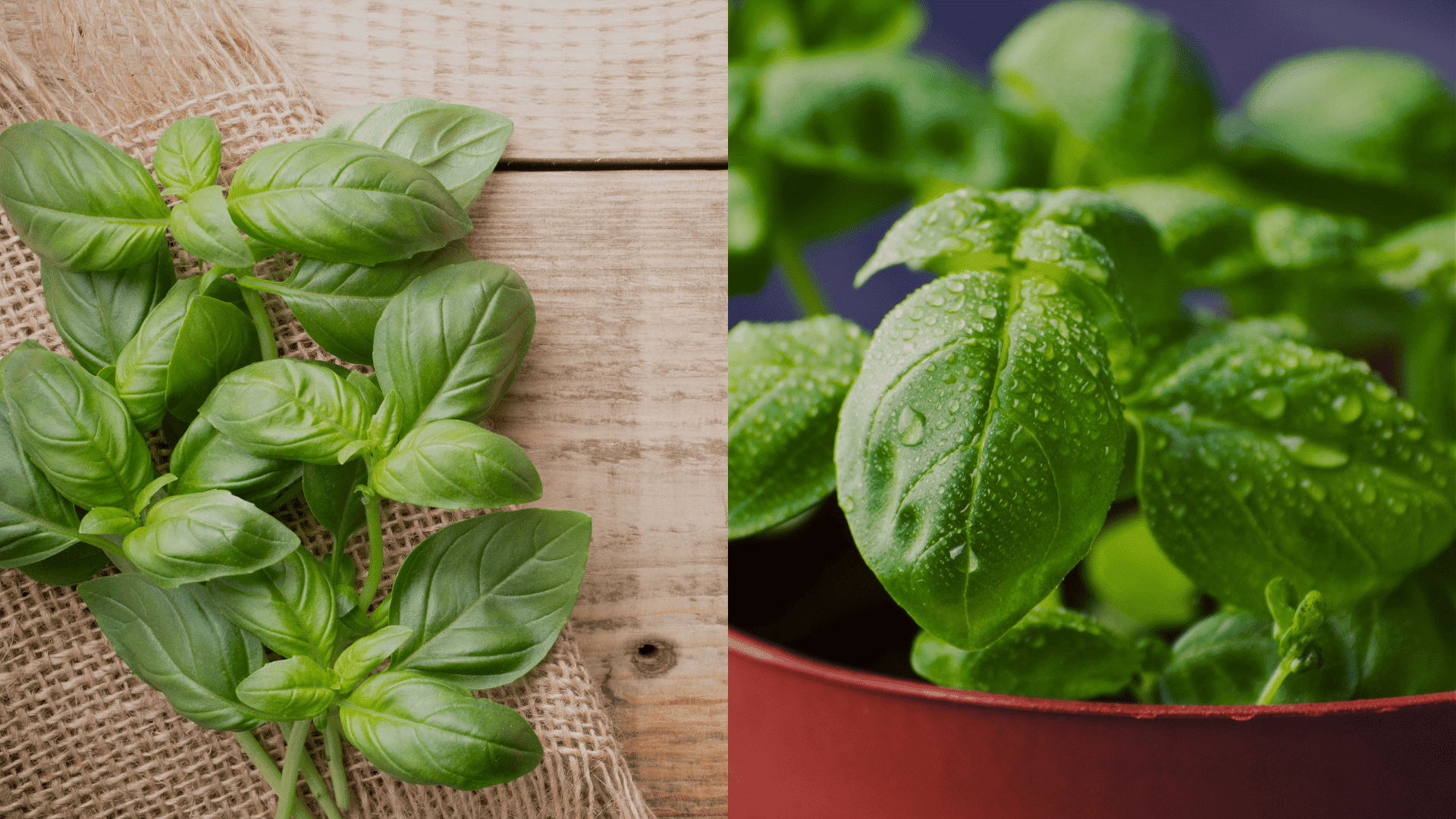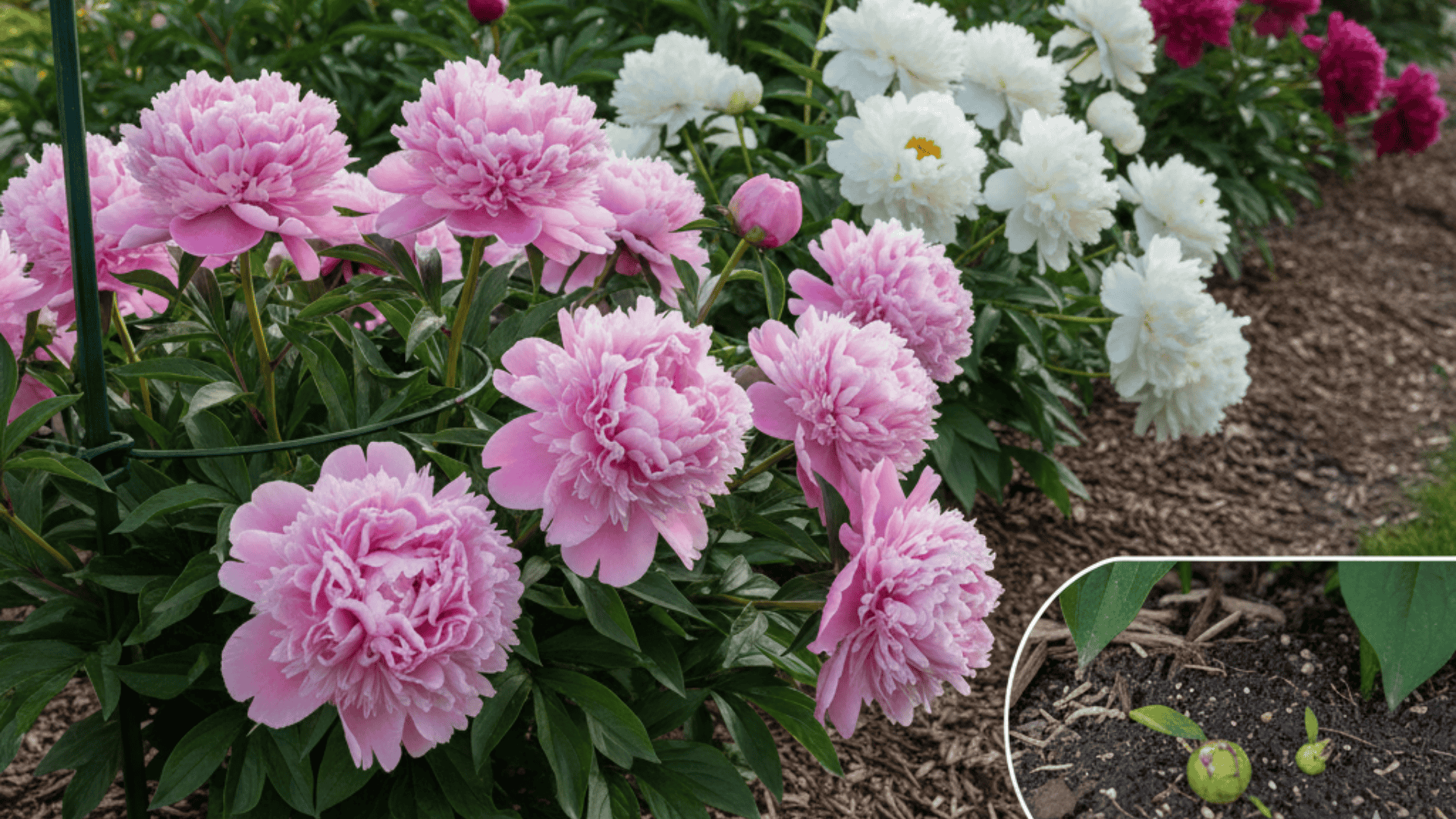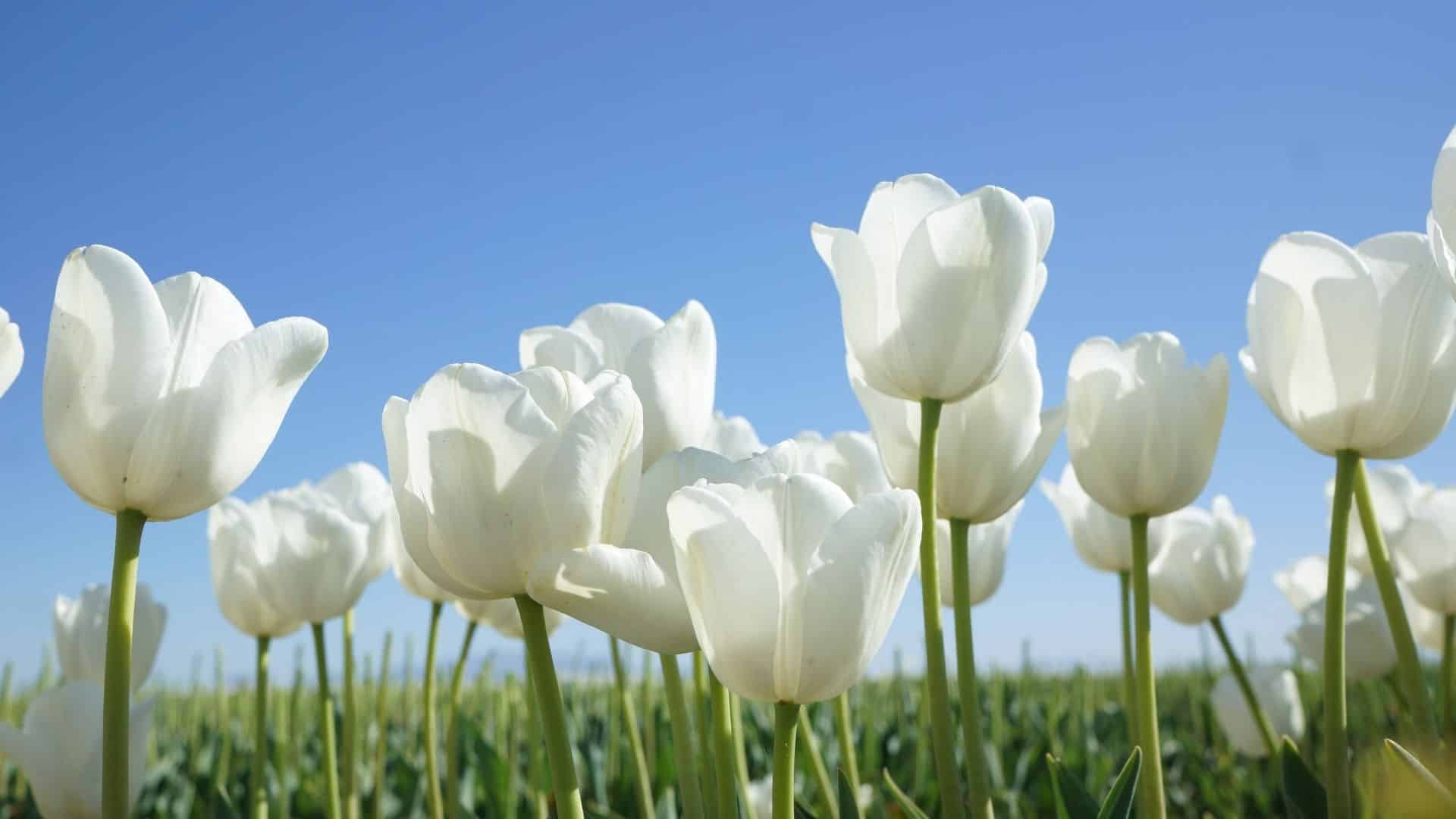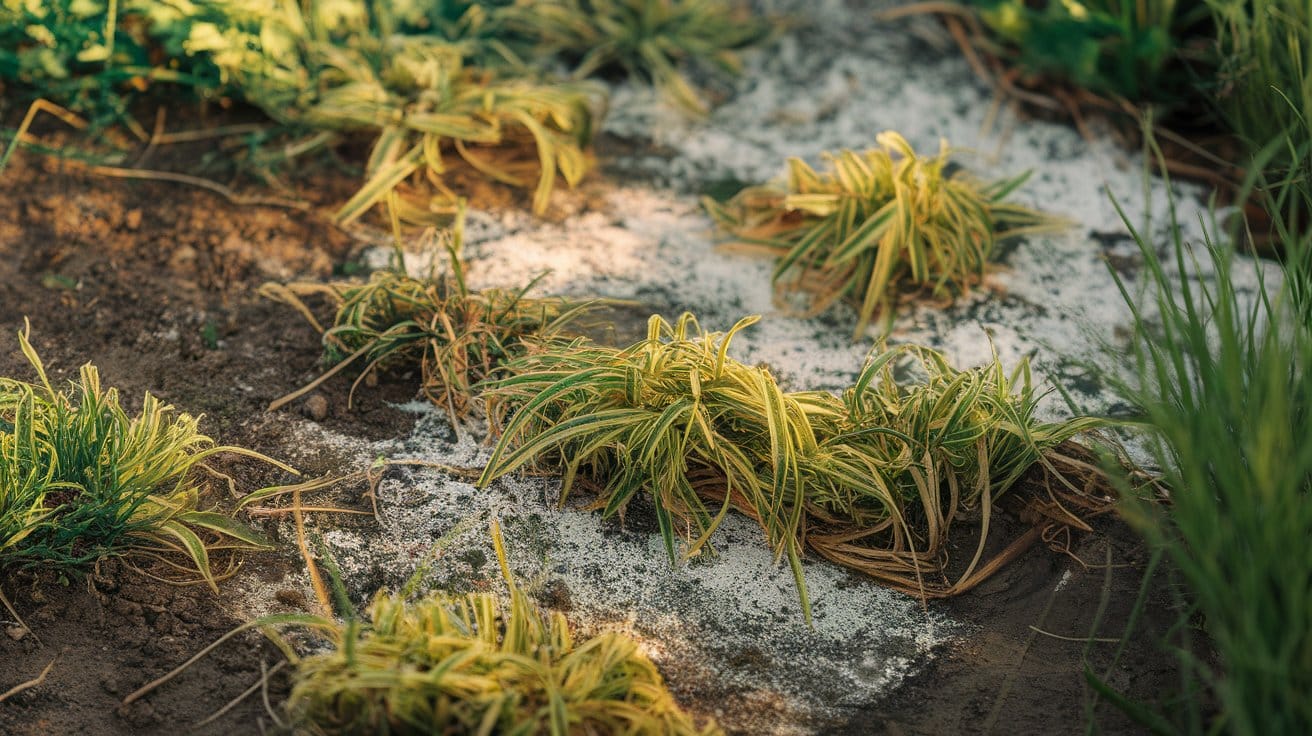Bananas hold more secrets than their simple appearance suggests.
Each plant can produce hundreds of pounds of fruit in a single year, and what’s often called a “banana tree” is actually the world’s largest herb.
Bananas don’t grow from seeds but from underground stems that regenerate new shoots after every harvest.
Even more surprising, there are more than a thousand banana varieties worldwide, ranging from red to blue-skinned types.
Though commonly associated with warm regions, these adaptable plants can thrive in many environments.
You’ll learn how to grow bananas successfully and how to keep them from ripening too quickly.
Banana Plant and Its Types
What are banana plants?Banana plants may look like trees, but they’re actually large herbs that grow year after year.
Instead of a woody trunk, they have thick layers of leaves wrapped tightly together to form a sturdy stem.
Each plant grows from an underground root system called a rhizome, which sends up new shoots known as pups or suckers.
Popular banana plant varieties:
| Banana Variety | Height | Best Feature | Ideal For / USDA Zone | Fruit Type |
|---|---|---|---|---|
| Dwarf Cavendish | 6–8 feet | Compact size; grows well in containers | Home gardens and patios (Zones 9–11) | Sweet, medium-sized edible fruit |
| Musa Basjoo | 8–10 feet | Extremely cold-hardy; survives frosty winters | Ornamental gardens (Zones 5–10 with mulching) | Inedible fruit |
| Rajapuri | 8–10 feet | Heat-tolerant and high-yielding | Warm, humid climates (Zones 9–11) | Flavorful edible fruit |
| Ice Cream Banana (Blue Java) | 15–20 feet | Creamy texture and vanilla-like flavor | Coastal and southern U.S. regions (Zones 9–11) | Sweet, dessert-style fruit |
How to Grow Bananas?
Growing bananas is simple when you plant them correctly and provide consistent care to ensure healthy, fruit-bearing plants.
Step 1: Choose the Right Variety

Start by selecting a banana type suited to your local conditions.
In warm climates, edible varieties like Dwarf Cavendish, Rajapuri, and Blue Java thrive outdoors.
In cooler areas, use containers for easy relocation indoors during winter.
For decorative use, cold-hardy types such as Musa Basjoo can survive freezing temperatures if heavily mulched.
Step 2: Prepare the Soil and Planting Site

Banana plants grow best in rich, loose soil that drains well yet holds moisture.
Pick a sunny location protected from strong winds, as large leaves can tear easily.
Before planting, mix compost, aged manure, or organic matter into the topsoil to improve nutrients and structure.
If the soil is heavy or clay-like, add sand or perlite for drainage.
A slightly acidic to neutral pH (5.5 – 7.0) gives the best root growth and fruit yield.
Step 3: Plant the Banana Pup

Dig a hole about twice the width and depth of the pup’s root ball and then place the pup upright in the hole so that its base sits level with the soil surface.
Fill the hole gently with enriched soil, pressing lightly to remove air pockets.
Water deeply after planting to settle the roots.
Add a 2–3 inch layer of organic mulch around the base, leaving a small gap around the stem to prevent rot.
Mulching helps the soil stay cool and moist while reducing weeds.
Step 4: Water Regularly
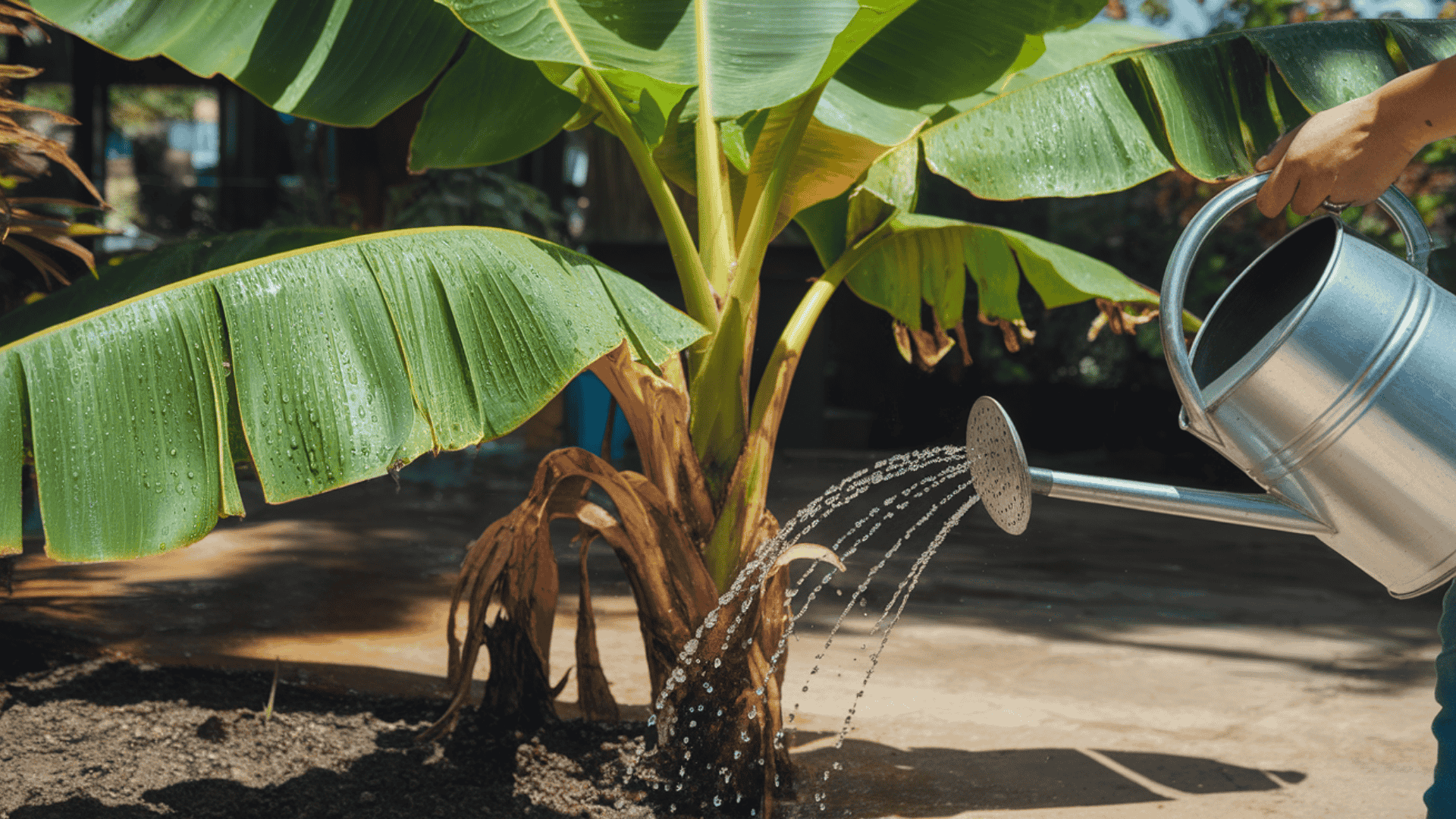
Bananas are thirsty plants that grow best in consistently moist soil.
During the first few weeks, water daily or whenever the top inch of soil feels dry.
After the plant settles in, water it deeply two or three times a week.
In hot, dry periods, increase frequency. Always ensure water drains freely, since soggy soil can lead to root rot.
For container plants, check moisture more often as pots dry faster than garden beds.
Step 5: Feed for Healthy Growth
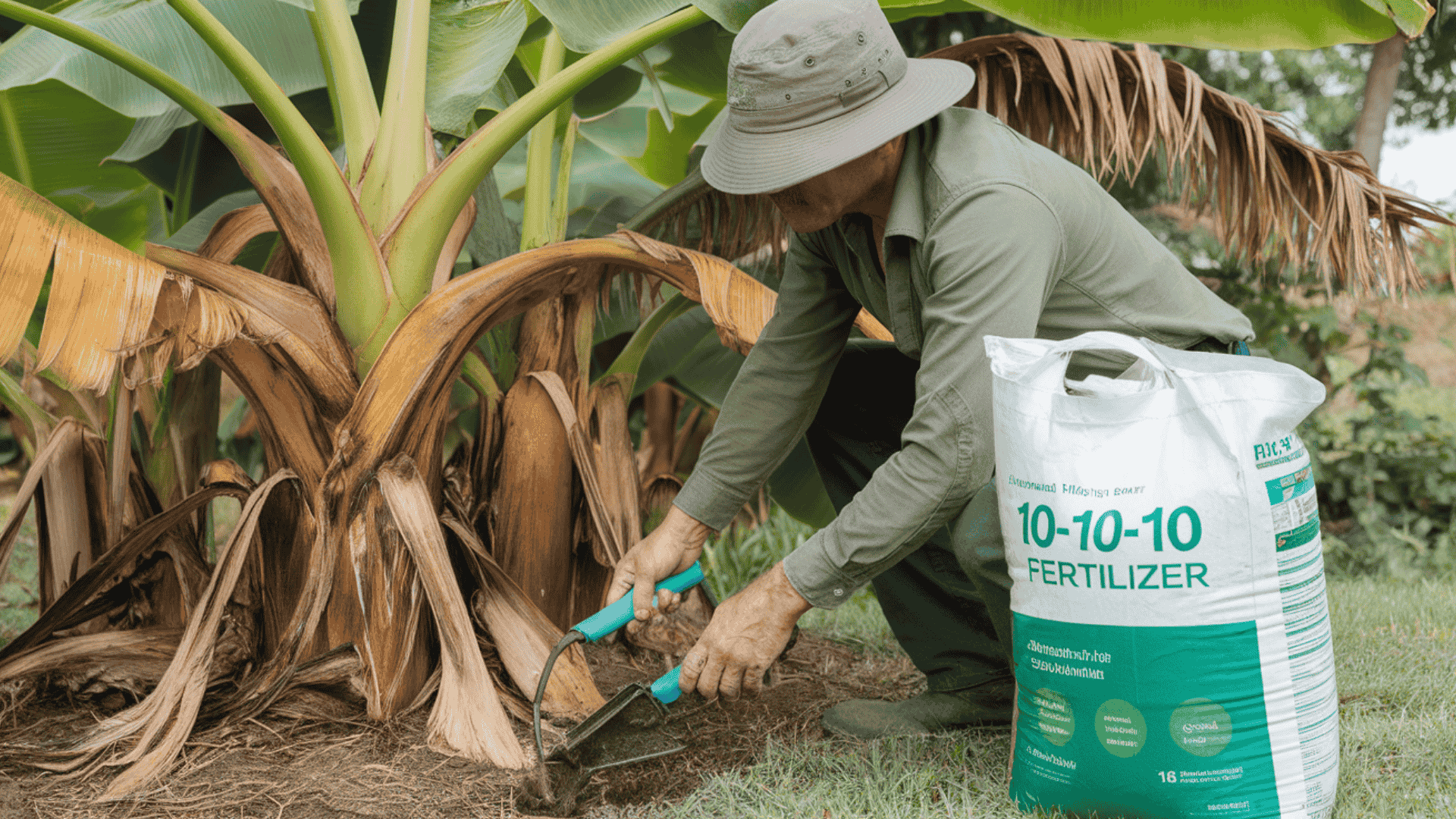
Bananas grow quickly and need regular feeding.
Use a balanced fertilizer such as 10-10-10 every four to six weeks during early growth to promote strong roots and green leaves.
As the plant begins to flower, switch to a fertilizer higher in potassium, such as 8-10-12 or organic options like compost tea or banana peel fertilizer, to support healthy fruit development.
Rake fertilizer gently into the topsoil and water afterward so nutrients reach the roots.
Step 6: Support and Monitor Growth
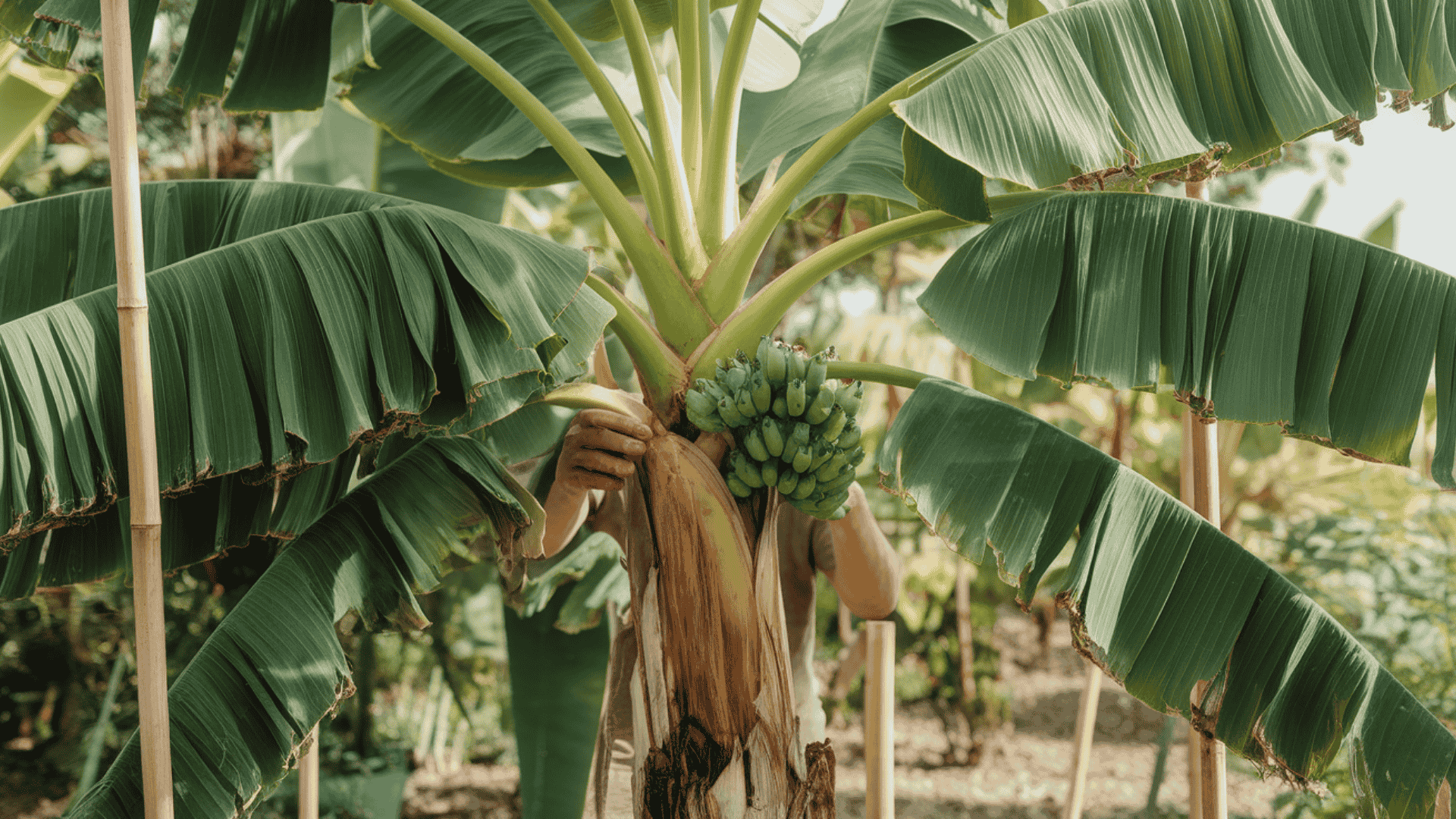
As the banana plant matures, prune off yellow, broken, or dried leaves to keep it tidy and disease-free.
Large fruit clusters can weigh down the stem, so use bamboo stakes or garden supports to hold them upright.
Check the plant regularly for signs of pests such as aphids or spider mites and treat early with neem oil or insecticidal soap.
Providing steady care helps the plant remain strong through its growth cycle.
Step 7: Wait for Fruiting

Bananas typically take about 12–18 months to flower and produce fruit.
When the large flower stalk appears, it gradually develops clusters known as “hands.”
Once the fruit ripens, harvest the bunch by cutting the entire stem carefully.
After fruiting, the main stem naturally dies. Cut it down to the base so new shoots called suckers can replace it and continue the cycle of growth.
With ongoing attention, one root system can keep producing for years.
How to Grow Bananas from Seeds or Fruit?
Growing bananas from seeds or fruit can be challenging but rewarding for those who enjoy experimenting with tropical plants.
Growing Banana Plants from Seeds
Growing bananas from seeds requires time, warmth, and consistent moisture.
Unlike hybrid edible bananas, seed-bearing varieties sprout slowly and often serve ornamental purposes rather than producing edible fruit.
-
Collect mature black seeds from ripe bananas and clean them.
-
Soak in warm water for 1–2 days to soften the shell.
-
Plant ¼ inch deep in moist, well-draining soil.
-
Keep warm (75°F–85°F) and cover lightly with plastic to hold humidity.
Seeds may take several months to sprout and usually produce ornamental, not edible, plants.
Growing Banana Plants from Fruit
It’s possible to grow banana plants from fruit if the fruit contains viable seeds, common in wild or ornamental species, but not in commercial store-bought bananas like Cavendish.
-
Remove and clean black seeds from ripe fruit.
-
Soak them in warm water for 1–2 days.
-
Plant ¼ inch deep in moist soil and keep warm (75°F–85°F).
-
Cover lightly with plastic to retain moisture.
Germination takes months, and the plants usually grow decorative leaves rather than edible bananas.
Ideal Growing Conditions for Bananas
Create perfect banana growing conditions with consistent warmth, eight hours of sunlight, moist well-draining soil, and monthly feeding for healthy plants.
| Condition | Optimal Range / Practice | Tips for Healthy Growth |
|---|---|---|
| Temperature & Sunlight | 75°F–95°F; at least 8 hours of full sun daily | Growth slows below 60°F; protect plants from frost. |
| Humidity & Watering | 50–80% humidity; water 2–3 times per week | Keep soil moist but not soggy; mist leaves in dry air. |
| Soil Type & pH | Loamy, nutrient-rich soil; pH 5.5–7.0 | Mix compost or manure to improve fertility and drainage. |
| Fertilization | 10-10-10 monthly during growth; 8-10-12 during flowering | Boost potassium for sweeter, stronger fruit. |
| Wind & Cold Protection | Shelter from strong winds; mulch heavily in winter | Move potted plants indoors below 50°F. |
How to Keep Bananas from RipeningToo Fast?
To keep bananas from ripening too fast, reduce their exposure to ethylene gas and heat. Here are the most effective ways to slow the process:
- Separate the bananas: Keep each banana apart so the ethylene gas from one doesn’t affect the others.
- Wrap the stems: Cover the stems tightly with plastic wrap or foil to trap ethylene gas at the source.
- Store in a cool place: Keep bananas at room temperature away from sunlight or heat sources. Avoid refrigerating until fully ripe; cold can darken the peel.
- Hang them up: Use a banana hanger to improve air circulation and reduce pressure points that lead to bruising.
- Keep away from other fruits: Apples, avocados, and tomatoes emit high levels of ethylene gas, which can speed up banana ripening.
Growing and Caring for Banana Plants
Their growing needs and maintenance routines ensure healthy plants and better fruit production.
Consistent watering, pruning, and feeding are essential for healthy banana growth.
- Watering: Keep soil moist but not soggy. Water daily in hot weather and deeply 2–3 times a week once established.
- Feeding: Use a potassium-rich fertilizer or compost every 4–6 weeks to support flowering and fruiting.
- Pruning: Remove yellow or damaged leaves and cut back the main stem after harvest so new shoots can grow.
- Pests: Watch for aphids, spider mites, and weevils; treat with neem oil or insecticidal soap.
- Protection: Support heavy fruit clusters and insulate roots with mulch or burlap in cold areas.
Conclusion
Choosing the right variety, maintaining warm conditions, and providing rich soil can help you grow strong, productive plants.
If grown from pups or seeds, consistent watering and feeding ensure healthy growth and good yields.
Even in cooler regions, container growing and proper protection allow bananas to thrive.
Beyond their fruit, these plants add a tropical touch to gardens and homes.
Have you ever tried growing bananas, or have helpful tips for keeping them fresh longer?
Share your experience in the comments below.
Frequently Asked Questions
Do Banana Plants Need Pollination To Produce Fruit?
Most edible bananas don’t require pollination to produce fruit because they’re seedless hybrids. They grow through a process called parthenocarpy, meaning bananas can form naturally without fertilization.
What’s the Best Banana Variety for Beginners?
Dwarf Cavendish is perfect for beginners. It’s compact, easy to care for, adapts well to containers, and consistently produces medium-sized, sweet fruit under warm and sunny conditions.
How Many Bananas Does One Plant Produce?
A single banana plant usually produces one bunch with about 50 to 150 bananas, depending on the variety and growing conditions. After fruiting, the stem dies, but new shoots continue the cycle.
What Type Of Fertilizer Works Best For Banana Plants?
Banana plants grow best with nutrient-rich, balanced fertilizers high in nitrogen, phosphorus, and potassium (NPK). Organic compost or manure also improves soil structure and supports steady fruit development.




